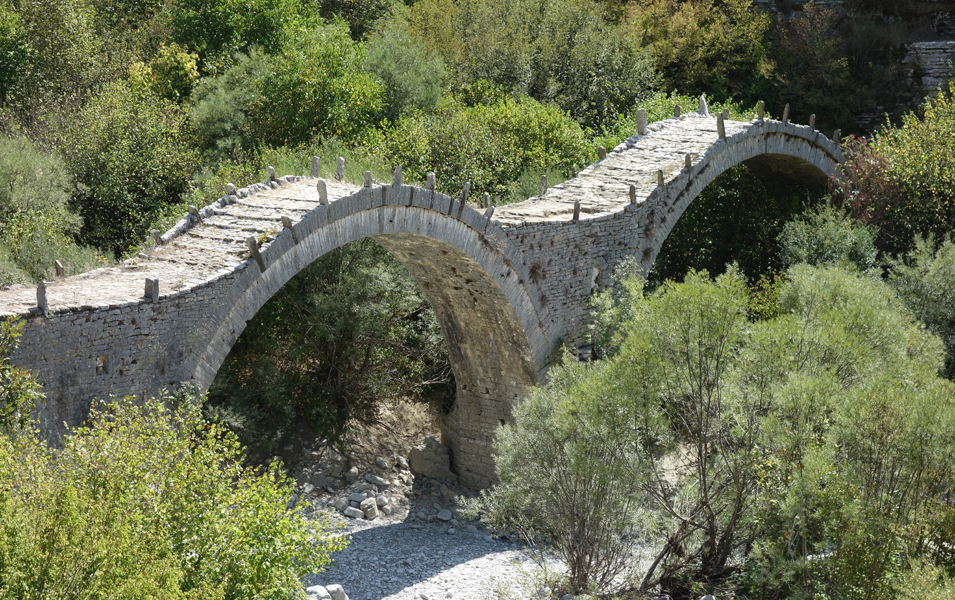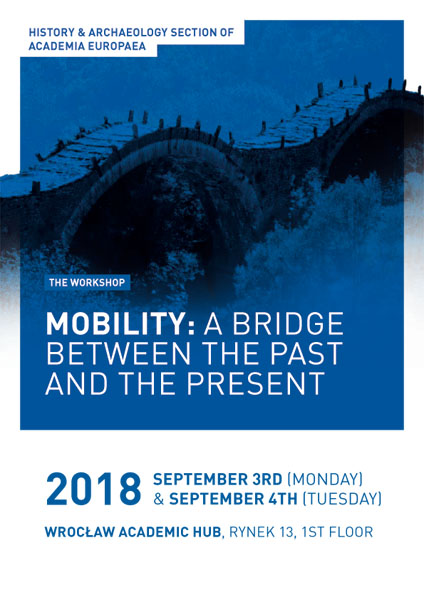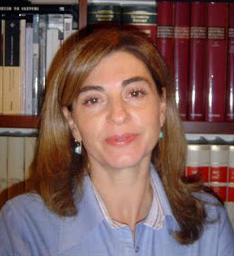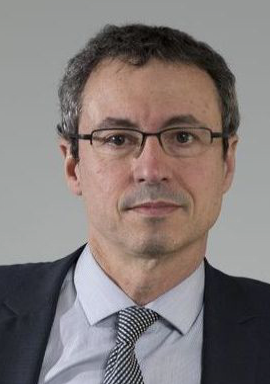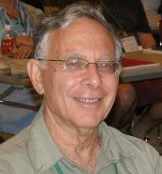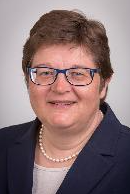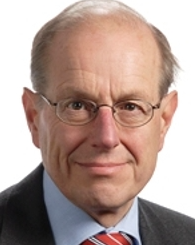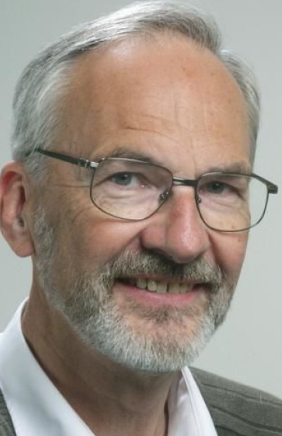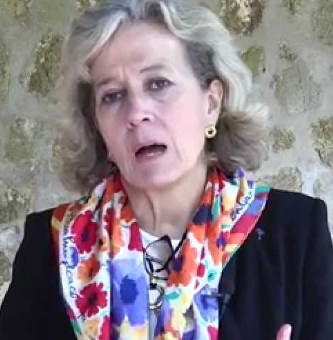Mobility: a bridge between the past and the present#
Following the decision taken by the Academia Europaea board in November 2017, the History & Archaeology Section will organise its first bi-annual workshop meeting in Wroclaw, Poland, on Monday 3 September and Tuesday 4 September 2018, on the topic of Mobility: a bridge between the past and the present.
The topic of « mobility » is understood here in its paradigmatic sense. It takes into account the mobility of human beings, goods, animals and plants, diseases or knowledge, including infrastructure, effects on environment, societies and politics, gender issues, transport, etc. At the same time, an historical dimension may serve to bestow upon such paradigm the perspective given by time when applied to different patterns of mobility. However, the bridge is not only between past and present, but also between disciplines, both within and beyond the realm of humanities and social sciences.
The History & Archaeology Section of Academia Europaea seeks, therefore, through this first workshop, to explore the bridges that a study of mobility may establish between different and seemingly unrelated disciplines. The papers presented may thus address a wide variety of issues related to the general topic. We wish therefore to invite all those among you who might be interested in participating in the Workshop.
Apart from the pleasure of meeting colleagues and friends, the purpose of this workshop is to consider strengthening the links between the two component disciplines of our Section, namely History and Archaeology, while at the same time consolidating our disciplinary voice within the Academia Europaea and establishing a constructive dialogue with the other sections of the Academia.
Nikita Harwich
Section Chair (2017-2019)
harwich.nikita@noos.fr

PROGRAMME#
Venue: WROCŁAW KNOWLEDGE HUB, RYNEK 13, 1ST FLOOR#
Monday, September 3rd#
Morning session
10:00 - 10:15 Welcoming words: Nikita Harwich (H & A Section chair)
10:15 - 11:00 Keynote Speech: Amélia Polónia "Mobilities: the Role of Social Sciences and the Humanities under the United Nation Sustainable Goals for 2020-2030"
11:00 - 11:30 Coffee break
Chair/Moderator: Krzysztof Nawotka
11:30 - 12:00 Stephen Bi "The Institutional Lock-out of Sustainable Transportation Technologies: Inherent, Intentional, Invertible?"
12:00 - 12:30 Discussion
12:30 - 14:00 Lunch
Afternoon session
Chair/Moderator: Pieter Emmer
14:00 - 14:30 Gideon Biger "International boundaries - The Bridge between History, Geography and Political Science"
14:30 - 15:00 Renate Pieper "Migrating news from handwriting to print in early modern Europe"
15:00 - 15:30 Coffee break
15:30 - 16:00 Discussion
16:30 - 18:00 Guided tour of the University premises and old city
19:30 Gala Dinner (Jasna Restaurant , Pawła Włodkowica 18)
, Pawła Włodkowica 18)
Tuesday, September 4th#
Morning session
9:15 - 10:00 Keynote Speech: Pieter Emmer "Free and Unfree Migration, 1500-1900"
10:00 - 10:30 Coffee break
Chair/Moderator: Renate Pieper
10:30 - 11:00 Sverre Håkon Bagge "Social and Geographic Mobility in Medieval Scandinavia"
11:00 - 11:30 Jörg Peltzer "Transfer, Entanglement and Regal Traditions. The Mobility of Ideas or how to Define Princely Rank in England and the Empire in the Fourteenth Century"
11:30 - 12:00 Manuel Lucena Giraldo "Public Works in the Spanish Empire, a Bridging Perspective"
12:00 - 12:30 Discussion
12:30 - 14:00 Lunch
Afternoon session
Chair/Moderator: Nikita Harwich
14:00 - 14:30 Hans Ulrich Jessurun d’Oliveira "Brexit and Sustained Mobility"
14:30 - 15:00 Rosa Maria Martínez de Codes "Migration, Governance and Religious Identities across Western Countries"
15:00 - 15:30 Coffee break
15:30 - 16:00 Discussion
16:00 - 16:30 Summary and farewell conclusions

Abstracts#
Amélia Polónia. University of Porto/CITCEM – AE (History & Archaeology Section)#
Amélia Polónia is professor at the University of Porto. She holds the chair of Portuguese Overseas Expansion. Among her latest publications are, as co-editor, Beyond Empires. Global, Self-Organizing, Cross-Imperial Networks, 1500-1800 (Leiden: Brill, 2016); Seaports in the First Global Age. Portuguese Agents, Networks and Interactions (Porto: Editorial UPorto, 2016) and Mechanisms of Global Empire Building (Porto: CITCEM/ Afrontamento, 2017).Abstract:
"Mobilities: the role of Social Sciences and the Humanities under the United Nation Sustainable Goals for 2020-2030 "#
The Sustainable Development Goals (SDGs) for 2020-2030, otherwise known as the Global Goals, are a universal call to action to end poverty, protect the planet and ensure that all people enjoy peace and prosperity. They include areas such as climate change, economic inequality, innovation, sustainable consumption, peace and justice. They all point to the present and even more to the future, while history and historians study the past. The paper will discuss the possible contribution of the Social Sciences and the Humanities to these goals.
This will apply in particular to the topic of Migrations, which involves and connects with most of the previous concerns. The topic comprises broad concepts of socio-cultural, religious, political, economic, environmental and technological movement and change, duly emphasising notions of transnationality, syncretism and transition. The skills, experience and research interests of the Social Sciences and Humanities have a determinant role in this analysis furthering the proclaimed 17 Sustainable Goals. Since the study of mobility over time involves topics like intercultural exchanges and their reflections in society, language, culture and heritage, the Social Sciences and Humanities come inevitably to the fore.
Some of the topics mentioned above have been dealt with by historians, demographers, anthropologists, economists, or even biologists or epidemiologists – separately. Given the demonstrated usefulness of these concurrent yet often separate approaches, the paper will suggest to bring these disciplines together, to promote the interplay between their concepts, their methods and their knowledge, thus providing a new paradigm of approaching the topic.
Today more than ever, academics are encouraged to work across disciplines. The consensus seems to be that, while disciplinary research has its merits, the future lies in cooperation across disciplines. Rigid adherence to the borders of academia is a twentieth-century relic, scholars are told; the challenges of the twenty-first century (and beyond) will require historians to talk to botanists, literary critics to talk to physicists, and anthropologists to talk to astronomers. The question of this paper is: how far can social scientists go; how far do they want to go down this road?
Stephen Bi, Research Assistant, Model Operations (Sustainable Solutions Research Domain), Potsdam Institute for Climate Impact Research (PIK), Potsdam.#
Stephen Bi is a PhD candidate in climate economics, seeking to analyze the environmental, economic, and social aspects of sustainability. Research Assistant, Model Operations (Sustainable Solutions Research Domain) at the Potsdam Institute for Climate Impact Research (PIK), his recent publications include : “The Path Dependent Road to Sustainable Personal Transport”. Institut Europeén (IE-EI). (http://www.ie-ei.eu/Ressources/FCK/image/Theses/Stephen_Bi-Thesis.pdf ), Feb 2017 and « Is the EU Killing the Magic Plant? The Emerging International Consensus on Low Carbon Fuels Takes Center Stage in (Spite of) Brussels (https://advancedbiofuelsusa.info/is-the-eu-killing-the-magic-plant-the-emerging-international-consensus-on-low-carbon-fuels-takes-center-stage-in-spite-of-brussels
), Feb 2017 and « Is the EU Killing the Magic Plant? The Emerging International Consensus on Low Carbon Fuels Takes Center Stage in (Spite of) Brussels (https://advancedbiofuelsusa.info/is-the-eu-killing-the-magic-plant-the-emerging-international-consensus-on-low-carbon-fuels-takes-center-stage-in-spite-of-brussels ), April 25, 2018.
), April 25, 2018.
Abstract
"The Institutional Lock-out of Sustainable Transportation Technologies: Inherent, Intentional, Invertible?"#
Mobility lies at the crux of today’s global economy and of the modern human experience. Unfortunately, irreconcilable to the supposed international resolve to combat climate change, the worldwide transportation sector remains 93% dependent on the oil industry. Indeed, while other economic sectors in developed nations have begun to decarbonize in recent decades, greenhouse gas emissions from transportation have continued to rise. This observation runs counter to logic, given that sustainable mobility technologies were not only available but preferred over petrol engines over a century ago, long before analogous alternatives for other energy demands entered the market. The present paper will examine how automobiles came to be so dependent on a finite and socially detrimental resource when electric and ethanol-powered vehicles have always offered distinct performance advantages. A commonly offered explanation couples the Texas oil boom with Ford’s mass production of Model T’s – conjuring the U.S. history trope of manifest destiny – but actor-level analyses in proper historical context suggest a narrative driven by serendipity and conspiracy. Presented here are two separate series of actions and events by which ethanol and EVs fell from socio-political favor to technological lock-out. These accounts will be framed within a neo-institutional perspective which entwines the concepts of path dependency, increasing returns, political economy, techno-institutional complexes and carbon lock-in. The novel concept of inherent vs. intentional lock-out is introduced in an effort to categorize the specific mechanisms and institutions exploited to facilitate such extreme consolidation of power within a liberal market economy. An exploration of the institutional context of mobility and its evolution in America and in Europe will follow, serving both to compare the lock-out forces active in either society and to illuminate policies and social levers which can help break these barriers to the decarbonization of personal transport.
Xavier Costa-Guix, Northeastern University (Boston, Mass.) – AE (History of Art and Architecture, Musicology Section) #
Xavier Costa-Guix is currently Full Professor of the History of Art and Architecture at Northeastern University in Boston, where he served as Founding Dean of the College of Arts, Media and Design between 2010 and 2015. This academic year, Dr. Costa is a Visiting Researcher at Harvard University's Graduate School of Design in Cambridge, Massachusetts, and a Visiting Lecturer at the Metropolis Program, Universitat Pompeu Fabra in Barcelona. Some of his main publications include: “Metaphorical Peripheries. Contemporary Architecture in Spain and Portugal”. In Elie G. Haddad and David Rifkin, eds. A Critical History of Contemporary Architecture, 1960-2010. London: Ashgate, 2014, pp. 225-239. Coup de Dés. A Symposium on Housing and Public Space (Mies van der Rohe Foundation, 2010), Ai Weiwei (Mies van der Rohe Foundation, 2010), Wiel Arets: Works, Projects, Writings (Princeton Architectural Press, 2002).Abstract
"Guy Debord’s In girum revisited: From Dérive to the Situationist View of History"#
This paper presents the concept of contemporary mobility in relation to the writings and actions of the Situationist group, particularly in Guy Debord’s concepts of urban dérive and psychogeography as reflected in his last film In girum imus nocte et consumimur igni (1978). Additionally, the paper introduces a recent work by Catalan artist Antoni Muntadas, that reinterprets these questions in light of his series Media Sites/Media Monuments, replicating Debord’s filming of Venice through a contemporary lens. Connecting different disciplines, the paper examines the concept of mobility in its relation to history, philosophy, art and urbanism. Back in 1957, shortly after the foundation of the Situationist group, Guy Debord wrote the essay Psychogeographical Venice, intended to be the preface to a book that he never completed. In this brief text, Debord approached the city of Venice based on the concepts of psychogeography (“one of the aspects of the conscious arrangement of ambiance that one begins to call situationist,”) as well as of dérive --Venice seen as an unmappable labyrinth, a familiar terra incognita. In girum imus nocte et consumimur igni is titled after an ancient palindrome –“they turn around in the night consumed by fire.” It refers to the ephemeral brilliance of fireflies, as well as to a view of history where, according to Debord, revolutions are bursts of “momentary brilliance” that consume themselves in their own fire. The film was based on found, scavenged footage of different kinds, where some sequences, filmed in Venice, were interspersed between other cinematic fragments. These sequences appear and disappear a few times through the film, expressing a movement as well as an urban spatiality that embraces the entire narrative as a visual derive. According to Debord, both its images and commentary focus on the theme ofwater as a visual metaphor for the “flowing of time”, for the “evanescence of everything.” Water, that is, the passing of time, ends up drowning the flaming moments of revolutions.
Gideon Biger, Department of Geography and Human Environment, University of Tel-Aviv.#
Gideon Biger is professor emeritus in the department of geography and human environment at Tel Aviv University. His areas of interest include historical geography, history of modern Israel and political geography. Moreover, he is an expert in international and national boundaries. He is the author of The Boundaries of Modern Palestine, 1840-1947 (2004) and An Empire in the Holy Land: Historical Geography of the British Administration in Palestine, 1917-1929 (1994), among many other publications.Abstract
"International boundaries - The Bridge between History, Geography and Political Science"#
International boundaries are man-made separation lines, which divided between more than 200 different states which exist to-day all over our globs. These boundaries were described, a hundred years ago by Lord Curzon of Kedleston, later the British Foreign secretary, a "the razor's edge on which hangs suspended the modern issues of war and peace, or life or Death to nations". All of today's boundaries were created in the past; sometimes some years ago, sometimes some decades ago and some boundaries were even established some hundred years ago. Thus, International boundaries reflect the historical moments in the life of a state, when its limits were made according to its force and ability at that time. Thus, understanding the process of boundary making and their location can became a bridge of research and knowledge between three major scientific areas – History, Geography and Political science.
!Renate Pieper, Karl-Franzens-University, Graz – AE (History & Archaeology Section) Renate Pieper is Professor of Economic and Social History at the department of History at the Karl-Franzens-University of Graz. Specialized in Early modern cultural and economic history, her research has focused on the Spanish Empire and its European connections especially: cultural exchange, communication media and networks, mining, prices, state finances. She is the author of Die Vermittlung einer neuen Welt. Amerika im Kommunikationsnetz des habsburgischen Imperiums (1493-1598), Mainz (Van Zabern, 2000), co-editor of Cultural exchange and consumption patterns in the age of Enlightenment: Europe and the Atlantic World, Bochum (Winkler, 2013) among numerous other publications in German, Spanish and English.
Abstract
“Migrating news from handwriting to print in early modern Europe“#
The advent of the printing press, in the second half of the fifteenth century, has been of much interest to historians. Especially printed newspapers have been associated with the development of a modern public sphere. Nonetheless, most of the written information available continued to circulate in a manuscript form, well into the 20th century. Furthermore, on many occasions, handwriting was considered more precious than printing or typing. Thus, to a large extent, manuscripts set the patterns for imprints. This was also the case of newspapers. Thus, the purpose of my presentation is to show the intense dependency path of the first printed Dutch newspaper on Flemish handwritten newsletters.
Pieter Emmer, Prof. Emeritus, Leyden University – AE (History & Archaeology Section) #
Pieter Emmer is Emeritus Professor in the History of the Expansion of Europe and related migration movements at the History Department of the University of Leiden. Visiting fellow at Churchill College, Cambridge, UK (1978-79), he served as visiting professor at the University of Texas at Austin (1986-87) and at the University of Hamburg, Germany (1996-97). His recent publications include: The Dutch Slave Trade, 1500–1850. European Expansion and Global Interaction (Oxford and New York, NY: Berghahn Books, 2006) and The Dutch in the Atlantic Economy, 1580-1880. Trade, Slavery, and Emancipation (Aldershot,Variorum, 1998). Together with Klaus Bade, Jochen Oltmer and Leo Lucassen, he wrote and edited The Encyclopedia of European Migration and Minorities. From the 17th Century to the Present (New York: Cambridge University Press, 2011).Abstract
"Free and Unfree Migration, 1500-1900"#
The discovery of the New World sparked a large-scale migration movement lasting more than four centuries. In this presentation I will first discuss the mobility within both Europe and Africa during the early modern period showing that most migrations took place within those continents. Before 1800 only 2 to 3 million Europeans availed themselves of the opportunity to move to the New World and a sizeable part of this migration consisted of indentured labourers. However, the demand for labour in the New World could not nearly be satisfied by the supply neither of local Amerindian labour, nor by the relatively modest number of European migrants. As a result, the Europeans turned to Africa and transported about 11.5 million slaves to the New World. Humanitarian pressures ended the slave trade during the first half of the 19th century. After 1850, the migration of Europeans increased dramatically, but these migrants avoided the former slave regions. In order to replace slave labour some areas resorted to the importation of Asian indentured labourers, mainly from British India. At the end of my talk I will argue that these indentured migrants were not the “new slaves”, as is often argued.
Sverre Håkon Bagge, University of Bergen – AE (History & Archaeology Section)#
Sverre Håkon Bagge is Emeritus Professor of Medieval history at Bergen University. His recent publications include : « Warrior,King and Saint: The Medieval Histories about St. Olafr Haraldsson », Journal of English and Germanic Philology 109.3 (2010), pp. 281-321 ; From Viking Stronghold to Christian Kingdom. State Formation in Norway, c.900-1350 (København: Museum Tusculanum Forlag, 2010); « Ethics, Politics, and Providence in William of Malmesbury's Historia Novella », Viator 41 (2010), pp.113-32; « The Model Emperor - Eginhard's Charlemagne in Widukind and Rahewin », Viator 43 (2012) Cross and Scepter: The Rise of the Scandinavian Kingdoms from the Vikings to the Reformation, 2014).Abstract
"Social and geographic mobility in Medieval Scandinavia"#
The paper takes its point of departure in the kings’ travel pattern in thirteenth-century Norway which is relatively well documented. The king travelled on ship along the southern coast, between Oslo and Bergen, and spent the winter in one place – mostly in Bergen – where he gathered the leading men of the country for the Christmas celebrations. This pattern seems to form an intermediate phase between a period when he travelled all over the country and a later one, particularly during the unions with the neighbouring countries in the later Middle Ages, when he rarely visited Norway at all. This raises the question of the relationship between geographic and social mobility. A clearer social hierarchy would reduce the king’s need for travelling and the introduction of permanent and professional administrators would mean that these people would visit the king rather than vice versa. However, there are variations in this pattern, between the Scandinavian countries as well as over time. Moreover, the king did not travel exclusively for political reasons, but also for hunting and other entertainments and on pilgrimages. Nevertheless, the changes in this field form a significant part of the development of European monarchy.
Jörg Peltzer, Professor of Medieval History, Heidelberg University; currently Member, Institute for Advanced Study, Princeton University.#
Jörg Peltzer is Professor of Comparative Regional History in a European perspective with a focus on the late Middle Ages at the Ruprecht-Karls University of Heidelberg. His work focuses on social, political and legal history in the high and late medieval periods of Western Europe and the Reich. The geographical focus of his research is particularly on England, France and the Holy Roman Empire. His recent publications include, among many others: 1066. The fight for England's crown, Beck, Munich 2016; The rank of Palatine at the Rhine. The organization of the political-social order of the Reich in the 13th and 14th centuries Thorbecke, Ostfildern, 2013; Canon Law, Careers, and Conquest. Episcopal Elections in Normandy and Greater Anjou, c. 1140 and c. 1230 (Cambridge Studies in Medieval Life and Thought) (Cambridge, 2008)Abstract
"Transfer, Entanglement and Regal Traditions. The mobility of ideas or how to define princely rank in England and the Empire in the fourteenth century"#
Recent scholarship has argued that letter collections spreading through the chanceries across Europe shaped a European political language from the late 13th century onwards. This paper will address this issue by looking at how the royal chanceries in England and the Empire justified the promotion to the rank of an imperial prince/earl/duke/prince in either realm. How did they portray their respective socio-political orders and the role of the aristocratic elite therein? Which criteria did they develop to define what made a person worthy of promotion to princely rank? To what extent did they share their language, conceptions and ideas? Which sources did they draw upon? While considering a wide range of source material, the anchor of this study is William, duke of Juliers and earl of Cambridge (d. 1361). As an imperial prince and earl, William was a unique figure in fourteenth-century Europe. He was a chief diplomat travelling frequently between England and the Empire who owed his promotions to his restless activities for both, the English king and the Emperor. His promotions are thus ideally suited to discuss both, the potential entanglement of political thought in England and the Empire, and the possibility of a concrete transfer of ideas from one realm to the other. By contextualizing these findings in the wider historical context, it will be possible to assess to what extent a common European language of power was developed in late medieval Europe.
Manuel Lucena Giraldo, CSIC, Spain – AE (History & Archaeology Section).#
Manuel Lucena Giraldo is Senior Researcher at the History Institute of the Madrid-based Consejo Superior de Investigaciones Científicas (CSIC), within the research group of Compared Studies of the Caribbean and Atlantic World. His recent publications include: Historia de un cosmopolita. José María de Lanz y la Fundación de la Ingeniería de Caminos en España y América (Colegio de Ingenieros de Caminos, Canales y Puertos, 2005); A los cuatro vientos. Las ciudades de la América Hispánica (Marcial Pons Ediciones de Historia, S. A., 2006); Naciones de rebeldes. Las revoluciones de independencia latinoamericanas (Taurus, 2010), selected the The Times Literary Supplement as one of the best essays for the year 2010; Francisco de Miranda: la aventura de la política (Editorial Edaf, S. L., 2011); Ruptura y reconciliación: España y el reconocimiento de las independencias latinoamericanas (Taurus, 2012); Las independencias iberoamericanas. Libertad para todos (Bonalletra-El País, 2017)Abstract
"Public Works in the Spanish Empire, a Bridging Perspective"#
The day after the battles, public works began. At least in the Spanish – unexpected – empire, after the failure of Christopher Columbus’s governance in the Antilles. The foundation of cities in the Americas was the colonization strategy. As we will see in this paper, urban republics formed a network to support the kingdoms of the Indies for more than three centuries. Far beyond traditional and nationalistic explanations, it was precisely the ability to establish bridges – social, as well as material – that explains the resilience and durability of such network until 1825. But no doubt the question goes far beyond. Why do empires in History last ? Is the so-called « soft-power » related to the abilities and chances to built up structures of material grounds an explanation? A bridge is a symbol of communication, but it establishes a limit as well. And it maintains a human connection which, in due course, is what a public work actually stands for.
Hans Ulrich Jessurun d’Oliveira, Professor emeritus, University of Amsterdam; European University Institute (Florence) – AE (Law Section).#
Hans Ulrich Jessurun d'Oliveira specializes in private international law, nationality law and immigration rights. Professor Emeritus from the University of Amsterdam and the European University Institute in Florence. He has several hundred academic publications to his name, has edited a number of literary journals (Propria Cures, Tirade and Merlyn) and, between 1975 and 2003, he was editor of the Dutch weekly periodical for the legal profession, the Nederlands Juristedblad. He frequently publishes opinion columns and editorials in the daily and weekly dutch press.Abstract
"Brexit and sustained mobility"#
Brexit has caused anxiety among EU citizens residing in the United Kingdom and among UK citizens residing in (other) EU countries. Their secure residency status as EU citizens has become shaky: UK citizens lose their status as EU citizens, and EU citizens may lose their residency status as the UK regains control on immigration after Brexit. Negotiations between the UK and the EU try to solve their predicaments. As the outcome is as yet not cast in stone, the migrants involved seek their own solutions. For a number of them an available solution is the acquisition of the nationality of either the UK or that of one of the EU member states. In my paper I will show that this bottom up approach, where the citizens take their destiny in their own hands, takes various forms, dependent on nationality laws of the states involved and their own opportunities. A few examples. UK citizens of Portuguese Jewish descent may opt for the nationality of Spain or Portugal, as these states have in recent years opened this possibility as a kind of Wiedergutmachung for the murder and banishment of their forbears. Likewise, UK citizens, descendants of German Jews exiled under the nazi regime, are now reacquiring German nationality. A numbers of persons seek to acquire the nationality of their partner, either to strenghten their residency status after Brexit, or in order to gain access to member states of the EU and retain their mobility in the EU. All this depends on the available laws on nationality, especially dispositions on plural nationality. Interestingly, some of these laws are changing under the pressure of Brexit.
Rosa María Martínez de Codes, Complutense University, Madrid – AE (History & Archaeology Section).#
Rosa-María Martínez de Codes is Professor of American history at the Facultad de Geografía e Historia of the Universidad Complutense de Madrid. Her recent publications include: Trends of Secularism in a pluralistic World (co-editor) Ed. Iberoamericana/ Vervuert, 2013; Los bienes nacionales de origen religioso en México. Estudio histórico-jurídico. (1833-2004), 2007, Instituto de Investigaciones Jurídicas, Universidad Autónoma de México, México; Rosa María Martínez de Codes y Jaime Contreras. “Hacia una historia Atlántica. Visiones religiosas compartidas”, Anuario de Estudios Americanos, Vol. 67, enero-junio, 2010, pp. 189-207; “La Ley Islámica y otros derechos”. In: R. Loyola y T. Calvillo (Coordinadores), Diálogo entre civilizaciones. Miradas, 2010, Universidad Nacional Autónoma de México, México, pp. 111-122.Abstract
"Migration, governance and religious identities across Western countries"#
The global refugee crisis has reignited longstanding debates about how to successfully integrate religious minorities into liberal democratic societies. Both United States, Canada and Europe share many of the same challenges but there are some relevant differences in how religious identity is managed. In Western Europe, cultural fears seem to dominate, with many misunderstanding Islam as a direct threat to the norms and values that bind their societies together. On the other side, security fears, particularly connected with terrorism, are preponderant in the United States. Are there fundamental differences in how religious identity and freedom are approached on both sides of the Atlantic?
Download the abstracts

Contact#
Katarzyna Majkowska, Hub OfficerAcademia Europaea Wrocław Knowledge Hub
Tel.: +48 71 770 20 26
majkowska@acadeuro.wroclaw.pl


